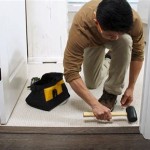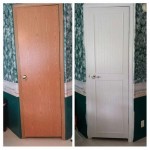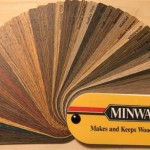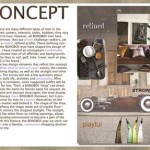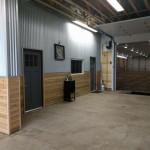```html
How To Soundproof An Existing Interior Wall
Reducing noise transmission through interior walls is a common concern in residential and commercial spaces. Complete sound isolation requires significant structural changes, but practical steps can significantly reduce the sound that penetrates an existing wall. Effective soundproofing involves addressing different aspects of sound transmission, including airborne noise (conversations, music) and impact noise (footsteps, slamming doors). Understanding the principles of soundproofing and applying the appropriate techniques will significantly improve the sound isolation of an existing wall.
Understanding Sound Transmission
Sound travels through structures via vibrations. When sound waves hit a wall, they cause it to vibrate. This vibration then transmits through the wall material, re-radiating as sound on the other side. To minimize sound transmission, the aim is to reduce the wall's ability to vibrate and transmit sound energy. This is achieved through several methods, including adding mass, decoupling, damping, and sealing air gaps.
Mass acts as a barrier to sound, requiring more energy to vibrate. Decoupling separates the wall structure, preventing direct vibration transmission. Damping converts vibrational energy into heat, dissipating the sound energy. Finally, sealing air gaps prevents sound waves from passing through openings in the wall.
Key Steps for Soundproofing an Existing Wall
Several techniques can be implemented to improve the soundproofing of an existing interior wall, ranging from simpler, less intrusive methods to more complex renovations. The most effective approach often involves a combination of these strategies, tailored to the specific needs and budget.
1. Sealing Air Gaps and Cracks
Air gaps and cracks, even small ones, can significantly compromise a wall's soundproofing capabilities. Sound waves travel easily through air, so sealing these openings is a crucial first step. This is the most cost-effective soundproofing tactic.
Inspect the wall carefully for any gaps around the perimeter, including where the wall meets the floor, ceiling, and adjacent walls. Also, check around electrical outlets, light switches, and any other fixtures mounted on the wall. Use acoustic caulk to seal these gaps. Acoustic caulk is specifically designed to remain flexible, preventing it from cracking over time as the wall expands and contracts, which is a regular occurrence in varying temperatures and humidity. Ordinary caulk may harden and crack, creating new pathways for sound.
For larger gaps, consider using expanding foam sealant. However, be careful not to over-apply the foam, as it can expand excessively and damage the surrounding materials. Once the foam has dried, trim any excess with a utility knife and cover with acoustic caulk for a smooth, airtight seal. Replace any outlet covers or light switch plates after caulking around the boxes.
2. Adding Mass to the Wall
Increasing the mass of the wall is a fundamental principle of soundproofing. A heavier wall is more difficult to vibrate, thus reducing sound transmission. There are several ways to add mass to an existing wall, each with varying degrees of effectiveness and complexity.
One option is to add a layer of mass-loaded vinyl (MLV). MLV is a dense, flexible material that can be attached directly to the wall surface. It is relatively easy to install and can significantly improve sound isolation. Before installing MLV, ensure the wall surface is clean and smooth. Use construction adhesive and screws to secure the MLV to the wall, overlapping the seams slightly to create a continuous barrier. Be aware that this will add a significant amount of weight to the wall, so inspect the structural integrity of the wall before installation. If the wall is not structurally sound, consult a professional before proceeding.
Another option, which involves more extensive work, is to add a layer of drywall. This involves applying a second layer of drywall over the existing one. For even greater soundproofing, use a thicker drywall, such as 5/8-inch drywall, or a specialized soundproofing drywall, which incorporates damping materials to further reduce vibration. To prevent the existing layer of drywall from acting as a drum and amplifying the sound, applying a layer of viscoelastic damping compound between the two layers of drywall can significantly improve sound reduction. This compound acts as a barrier, absorbing vibrations and preventing them from traveling through the wall. Ensure the new drywall is properly attached to the studs using screws, and that all seams are taped and mudded to create a smooth, seamless surface.
3. Decoupling the Wall
Decoupling refers to physically separating the wall's structure to prevent vibrations from transmitting directly from one side to the other. This is typically achieved by creating a floating wall or using resilient channels.
Resilient channels are metal strips that are attached to the wall studs and then the drywall is attached to the channels. The design of the channeled metal offers a small degree of flexibility, reducing the rigid connection between the drywall and the studs, and minimizing vibration transmission. When installing resilient channels, it is crucial to ensure that the drywall is attached only to the channels and not directly to the studs. Any direct contact between the drywall and the studs will negate the decoupling effect. Use screws that are the correct length to avoid penetrating the stud behind the resilient channel. The screws should only make contact with the metal of the resilient channel and not touch the stud behind it.
A more involved option is to build a completely new wall in front of the existing wall, leaving an air gap between the two. This creates a significant decoupling effect, but it requires more space and construction expertise. The new wall should be framed and attached to the floor and ceiling independently of the existing wall. Fill the cavity between the two walls with sound-absorbing insulation to further enhance soundproofing. Care must be taken to ensure no physical connections between the two walls, even incidental contact from pipes or wiring, which can bypass the decoupling and transmit sound.
Addressing Impact Noise
Impact noise, such as footsteps or objects hitting the wall, travels through the structure differently than airborne noise. Addressing impact noise often requires different strategies.
One effective method is to install sound-dampening materials on the source of the impact. For example, placing rugs or carpets on floors above the room can significantly reduce the transmission of footsteps. Similarly, using soft-close mechanisms on doors and drawers can minimize the impact noise from slamming.
Another approach involves treating the wall itself to reduce the transmission of impact vibrations. Applying a layer of viscoelastic damping compound to the wall can help to absorb and dissipate impact energy. This compound is typically applied as a thin layer between two layers of drywall or other wall materials. Alternatively, using sound-dampening clips to secure the drywall to the studs can help to isolate the wall from impact vibrations. These clips are designed to absorb energy and reduce the transmission of vibrations through the structure.
The Role of Insulation
While insulation is primarily known for its thermal properties, it also plays a significant role in soundproofing. Insulation absorbs sound waves within the wall cavity, preventing them from resonating and amplifying. Various types of insulation can be used for soundproofing, each with its own advantages and disadvantages.
Fiberglass insulation is a common and relatively inexpensive option. It is effective at absorbing mid- to high-frequency sounds, but it is less effective at low frequencies. Mineral wool insulation, made from rock or slag wool, offers better sound absorption than fiberglass, particularly at lower frequencies. It is also more fire-resistant and denser than fiberglass. Cellulose insulation, made from recycled paper, is another eco-friendly option that provides good sound absorption. It is often blown into wall cavities, providing a dense fill that minimizes air gaps.
For optimal soundproofing, consider using a combination of different insulation types. For instance, you could use fiberglass insulation to fill the majority of the wall cavity and then add a layer of mineral wool insulation for enhanced low-frequency sound absorption. When installing insulation, ensure it is packed tightly to fill all air gaps and prevent sound from traveling through the cavity. However, avoid over-compressing the insulation, as this can reduce its sound absorption properties. Also, consider using sound-dampening blankets between the studs and the insulation to help absorb sound and prevent it from travelling outside the wall cavity.
Soundproofing Doors and Windows
While this article focuses on walls, doors and windows are often significant sources of sound transmission. Addressing these weak points can significantly improve the overall soundproofing of a room.
For doors, ensure a tight seal around the perimeter. Use weatherstripping to seal any gaps between the door and the frame. Consider replacing hollow-core doors with solid-core doors, which are much more effective at blocking sound. Installing a door sweep at the bottom of the door can also help to prevent sound from leaking through. For windows, consider using double-paned or triple-paned windows, which have multiple layers of glass separated by air gaps or gas fills. These windows provide excellent sound insulation. Sealing any gaps around the window frame with acoustic caulk can also help to reduce sound transmission.
```
Wall Soundproofing How To Soundproof Your Netwell

How To Soundproof An Existing Wall 15 Ways Without Removing Drywall

How To Soundproof An Existing Wall 15 Ways Without Removing Drywall

Wall Soundproofing How To Soundproof Your Netwell

9 Diy Ways Of Soundproofing Existing Walls Reduce Noise Through

How To Soundproof Walls 8 Methods For New And Existing

How To Soundproof A Wall Materials For Soundproofing Walls

Wall Soundproofing How To Soundproof Your Netwell

How To Soundproof Existing Walls With Insulation South Austin Drywall

Soundproofing A Wall How To Soundproof Walls Mlv Mass Loaded Vinyl Manufacturer
Related Posts

